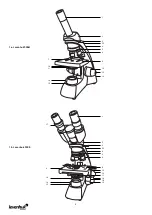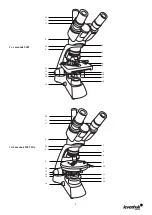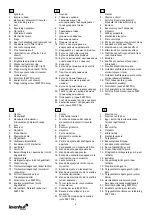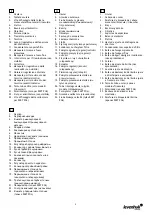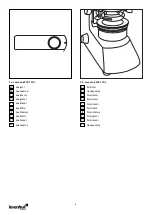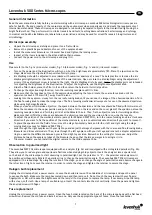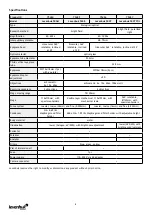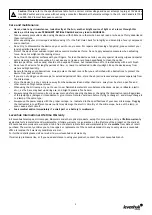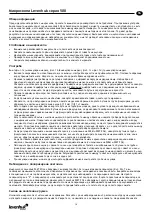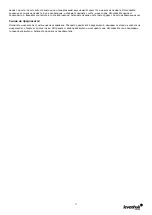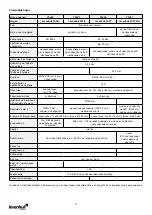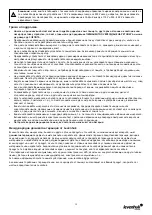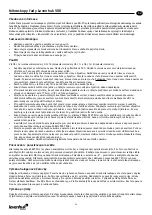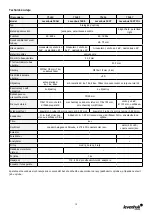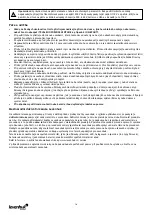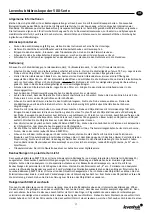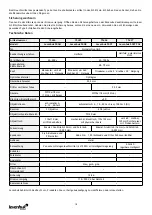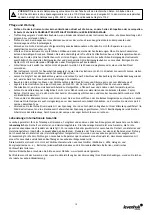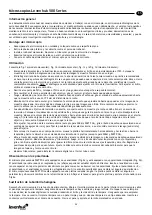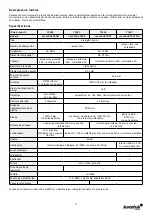
7
Levenhuk 500 Series Microscopes
General Information
Read the user manual carefully before you start working with a microscope. Levenhuk 500 Series biological microscopes are
safe for health, life and property of the consumer and the environment when properly used, and meets the requirements of
international standards. These microscopes are designed for observing transparent objects in the transmitted light using the
bright field method. They perform well in clinical research and tests; teaching demonstrations; bacterioscopy and cytology
in medical and health establishments, laboratories, universities; and may be used for scientific research in agriculture and
microbiology.
Microscope assembly
•
Unpack the microscope carefully and place it on a flat surface.
• Remove the plastic bags and dustproof cover of the eyepiece head.
• Install the monocular, binocular or trinocular head and tighten the locking screw.
•
Inspect all the items included in the kit and define their purpose.
• Connect the power cord to the microscope and plug it in.
Use
Please refer to the fig. 1а (monocular model), fig. 1b (binocular model), fig. 1c and 1d (trinocular model).
• Turn on the power and the illumination will turn on. Set the brightness at approximately 70%. Place the specimen on the
stage. Make sure the clips hold the specimen firmly in place.
• Iris diaphragm should be adjusted in accordance with numerical aperture of a lens. The best practice is to make the iris
diaphragm slightly smaller than the aperture of the selected lens. Open or close the iris diaphragm using the adjustment
screws. If the adjustment screw is turned to the right, the iris diaphragm is fully open. Note: the diaphragm is not intended
for adjusting the brightness of the illumination. To adjust the brightness, use the brightness adjustment knob.
•
Slide the filter holder, place the filter in it and then return the holder to its initial position.
•
To change the objective magnification, turn the revolving nosepiece until it clicks.
• Make sure that the lens does not touch the sample when adjusting the focus: rotate the coarse focus knob until the
specimen is about 3.175mm (1/8") away from the lens.
• Looking into the eyepiece, slowly turn the coarse focusing knob until you can see the image of the observed specimen. Turn
the fine focusing knob to make the image clear. The fine focusing mechanism allows you to focus on the observed specimen
while using high magnifications.
•
When you use an oil immersion objective, the space between the specimen and the lens should be filled with immersion oil.
Raise the condenser to the upper position and put a drop of oil on the lens and on the cover glass of the specimen. Move the
revolving nosepiece back and forth to get rid of air bubbles in the oil. Then, fix the objective lens in its working position.
Make sure that oil fills the entire space between the objective lens and the specimen. After use, wipe the lens dry.
•
To adjust the position of the mechanical scale (except for 500M and 500T POL), turn the coarse focusing knob in a clockwise
direction if you want to fix the position of the mechanical scale, or in a counterclockwise direction if you want to loosen it.
•
To place the specimen in the field of view, move the stage horizontally back and forth or left and right using the stage
moving knobs (except for 500M and 500T POL).
•
Look through the right eyepiece with your right eye and adjust the image sharpness with the coarse and fine focusing knobs.
Binocular and trinocular models: Then, look through the left eyepiece with your left eye and rotate the diopter adjustment
ring to equalize the difference between your left and right eyes vision. Remember the setting for future use. Adjust the
distance between the eyepiece tubes of the binocular head so that the image merges into a single circle.
• Trinocular models: you can install the digital camera to the third eyepiece tube.
Observation in polarized light
The Levenhuk 500T POL microscope is equipped with an analyzer (Fig. 2a) and is equipped with an integrated polarizer (Fig. 2b).
They allow you to reduce glare and spurious reflections when studying shiny objects. Insert the analyzer into a special slot
on the back of the microscope to start observing in polarized light. Set the polarizer to "0" — the polarizer and analyzer will
be positioned orthogonally. Rotate the polarizer ring to change the polarization angle. The Levenhuk 500T POL microscope is
equipped with a round stage. By using the rotation of the stage, you can change the angle of polarization and observe changes in
the refraction of light. Loosen the retainer in order to rotate the stage and tighten the retainer to secure the stage.
Halogen bulb replacement
Unplug the microscope from a power source. Loosen the knurled screw on the underside of microscope and open the panel
to expose the bulb. Make sure the lamp has cooled down and then remove it. Do not touch the new lamp with your fingers;
fingerprints or dirt will reduce the brightness and the lamp’s life. Use gloves to replace the lamp. If necessary, wipe the lamp
with a clean, soft cloth. Use a lamp of a suitable type. Insert the contacts into the slot vertically. Close the panel and tighten
the knurled screw with finger.
Fuse replacement
Unplug the microscope from a power source. Open the fuse holder located on the back of the microscope body with a flat head
screwdriver. Remove the old fuse and install a new one. Only use the appropriate types of fuses. Close the fuse holder.
EN


